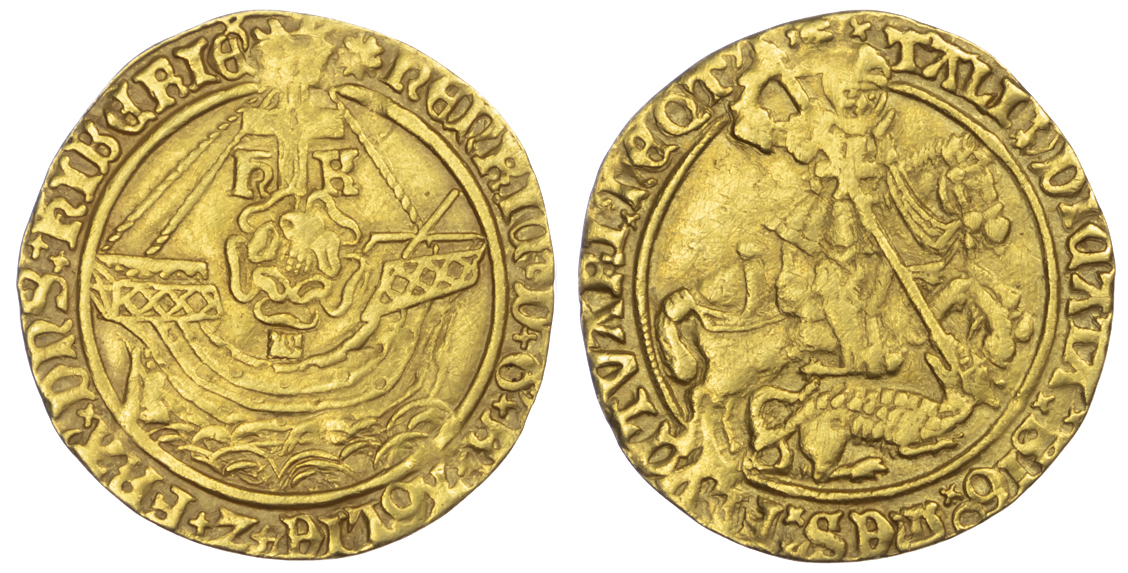Description
Henry VIII (1509-47), George Noble of six shillings and eight pence, second coinage (1526-1544), Tower mint, mintmark rose both sides. Legend reads HENRIC D G AGLIE Z FRA DNS HIBERNIE, ship sailing right with Tudor rose on mast, H and K above for Henry VIII and Katharine of Aragon. Rev, legend reads TALI DICATA SIG MES FLVCTVARI NEQT, St. George on horseback in armour spearing the dragon, saltire stops, 4.55g. (S.2270; N.1785/1; Schneider 576).
Struck on a full and round flan, with clear legends both sides and a pronounced golden toning. Very fine for this exceedingly rare issue, with a comprehensive and extensive supporting provenance.
Ex. T. B. Clarke-Thornhill, Glendining, 24 May 1938, lot 51
Ex. J. H. Barnes, Sotheby, 26 June 1974, lot 114
Ex. Norweb, Spink Auction 48, 13 November 1985, lot 313
Ex. Spink Auction 206, 1-2 December 2010, lot 898
At the beginning of this coinage period, in 1526, much of Henry’s coinage started to suffer debasement so as to garner finances for his wars and extravagances. It was the 18th year of his reign. While the silver coins suffered most, this no doubt still accounts for the stark rarity of his most famous gold pieces, such as the earliest third coinage sovereign – not plentiful even when first struck, it was a target of melting almost immediately as both weight and fineness dropped (from 23 ct to 20 ct). As well, through centuries of British coinage, earlier coins were recalled by the mint when found worn, clipped or otherwise compromised, which meant they were legally underweight and prone to rejection in commerce, by bankers. The same fate, the melting pot, awaited earlier coins that had been debased, even if just slightly. To some extent this accounts for the great rarity of the George nobles, but so does their odd denominational value of one-third pound. It must have been planned to be a handy value, identical to that of the traditional angel, but the angel was just then being revalued and the George noble was not familiar; confusion must have surfaced, and soon this lovely style of coin was replaced by a complement of other denominations. Later, the angel was made to a higher standard of value and again became a familiar coin, but the George noble was gone.”





